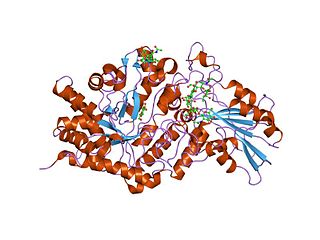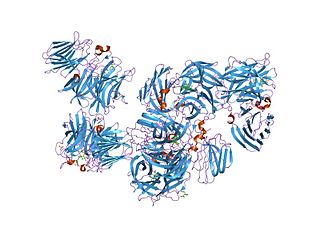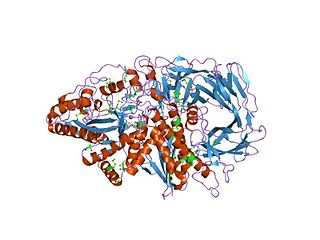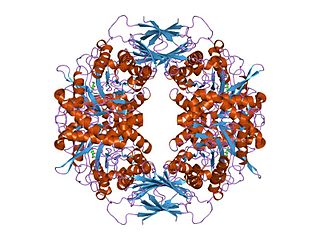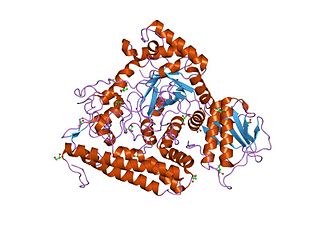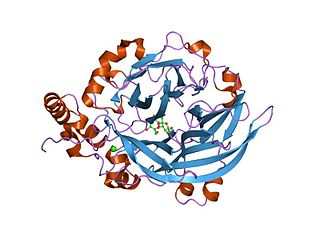| Glycosyl hydrolase family 65, N-terminal domain | |||||||||
|---|---|---|---|---|---|---|---|---|---|
 maltose phosphorylase from lactobacillus brevis | |||||||||
| Identifiers | |||||||||
| Symbol | Glyco_hydro_65N | ||||||||
| Pfam | PF03636 | ||||||||
| Pfam clan | CL0103 | ||||||||
| InterPro | IPR005196 | ||||||||
| SCOP2 | 1h54 / SCOPe / SUPFAM | ||||||||
| CAZy | GH65 | ||||||||
| |||||||||
| Glycosyl hydrolase family 65 central catalytic domain | |||||||||
|---|---|---|---|---|---|---|---|---|---|
 maltose phosphorylase from lactobacillus brevis | |||||||||
| Identifiers | |||||||||
| Symbol | Glyco_hydro_65m | ||||||||
| Pfam | PF03632 | ||||||||
| Pfam clan | CL0059 | ||||||||
| InterPro | IPR005195 | ||||||||
| SCOP2 | 1h54 / SCOPe / SUPFAM | ||||||||
| CAZy | GH65 | ||||||||
| |||||||||
| Glycosyl hydrolase family 65, C-terminal domain | |||||||||
|---|---|---|---|---|---|---|---|---|---|
 maltose phosphorylase from lactobacillus brevis | |||||||||
| Identifiers | |||||||||
| Symbol | Glyco_hydro_65C | ||||||||
| Pfam | PF03633 | ||||||||
| InterPro | IPR005194 | ||||||||
| SCOP2 | 1h54 / SCOPe / SUPFAM | ||||||||
| CAZy | GH65 | ||||||||
| |||||||||
In molecular biology, glycoside hydrolase family 65 is a family of glycoside hydrolases.
Glycoside hydrolases EC 3.2.1. are a widespread group of enzymes that hydrolyse the glycosidic bond between two or more carbohydrates, or between a carbohydrate and a non-carbohydrate moiety. A classification system for glycoside hydrolases, based on sequence similarity, has led to the definition of >100 different families. [1] [2] [3] This classification is available on the CAZy web site, [4] [5] and also discussed at CAZypedia, an online encyclopedia of carbohydrate active enzymes. [6] [7]
This family of glycosyl hydrolases (CAZY GH_65) includes vacuolar acid trehalase and maltose phosphorylases. Maltose phosphorylase (MP) is a dimeric enzyme that catalyzes the conversion of maltose and inorganic phosphate into beta-D-glucose-1-phosphate and glucose.
It consists of three structural domains. The C-terminal domain forms a two layered jelly roll motif. This domain is situated at the base of the catalytic domain, however its function remains unknown. [8] The central domain is the catalytic domain, which binds a phosphate ion that is proximal the highly conserved Glu. The arrangement of the phosphate and the glutamate is thought to cause nucleophilic attack on the anomeric carbon atom. [8] The catalytic domain also forms the majority of the dimerisation interface. The N-terminal domain is believed to be essential for catalytic activity [8] although its precise function remains unknown.


